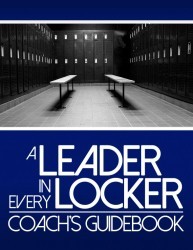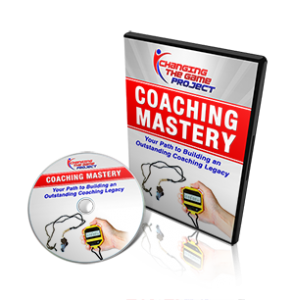A Few Thoughts on Ethics and Leadership
Cory Dobbs, Ed.D., The Academy for Sport Leadership
The following is an excerpt of an interview conducted by Dr. Cory Dobbs, President of The Academy for Sport Leadership. Dr. Dobbs interviewed ethics experts Ann Tenbrunsel (Professor, the University of Notre Dame) and Max Bazerman (Professor, Harvard University). This interview took place following the release of Bazerman and Tenbrunsels’ bestselling book, Blind Spots: Why We Fail to Do What’s Right and What to Do About It.
When confronted with an ethical dilemma, most of us like to think we would stand up for our principles. But we are not as ethical as we think we are. In Blind Spots, leading business ethicists Max Bazerman and Ann Tenbrunsel examine the ways we overestimate our ability to do what is right and how we act unethically without meaning to. From the collapse of Enron and corruption in the tobacco industry, to sales of the defective Ford Pinto and the downfall of Bernard Madoff, the authors investigate the nature of ethical failures in the business world and beyond, and illustrate how we can become more ethical, bridging the gap between who we are and who we want to be.
- Jim Tressel, the former Ohio State University football coach, resigned as a result of his failure to properly handle an NCAA violation committed by one or more of his players. How does the process of ethical fading apply to coaches?
We know from our research that when decisions are made in environments that are heavily sanctioned ethical fading is much more likely to happen. In one study, individuals were asked to make a decision involving ethical implications. Half of those participating were in a “no sanction” condition – they were told there would not be any monitoring or sanctions of the behavior. In some sense, the decision to do what was right was up to them. The other half were in a “sanction” condition in which they were told that there would be monitoring and sanctions of the decisions. We found that 55% who made the decision in the no sanction environment saw the decision as an ethical one whereas only 20% saw it as an ethical decision in the sanction environment. How you see the decision is important because it is related to an ethical choice: of those that saw it is an ethical decision, 94% behaved ethically; of those who did not see it as an ethical decision, only 44% behaved ethically.
We have seen the athletic environment increasingly characterized by regulation and the accompanying monitoring and sanctioning of decisions that comes with that. This in turn leads to more ethical fading, meaning that decision makers in this environment are less likely o ask the question “What is the right thing to do?” and instead focus on “What is the probability I will get caught and what is the cost and how does that compare to the benefits I will see from not-complying?”. In this type of environment, whether or not a decision is ethical or right is not considered; rather, there is a cost-benefit calculation which determines whether it makes sense to comply or defy the NCAA rules. If it too costly to defy, compliance results but if the benefit is large enough, compliance goes out the window.
It is also quite likely that motivated blindness played a part in Tressel’s decisions. Motivated blindness describes the tendency for individuals to not notice the behavior of others when it is in their best interest to not notice. In the steroid scandal in Major League Baseball, there were many people—the commissioner, the owner, coaches, the player’s union—who should have noticed the rapid changes in the players and the sudden onset of record-breaking performances. Why didn’t they see what now seems obvious? They didn’t notice because of the benefits they received by not noticing. Steroid use increased power, power led to more home runs, home runs boosted attendance and attendance meant more money for all involved. These benefits blinded those involved to the problems they preferred not to see.
Similarly, Tressel was most likely motivated to not see the NCAA violations committed by his players because it was in his best interest not to see them. By not seeing them, he didn’t have to sanction his players, his players were happier, and life in the Athletic Department was much smoother. This motivated blindness was driven in part by the larger environment in which Tressel was rewarded. Tressel was rewarded for winning games, not prosecuting his players. He responded well to those rewards.
- Why is an adoring public able to quickly forget such wrongs?
The fans are able to forget these transgressions for the same reason they are committed – motivated blindness. Loyal fans don’t want to know or contemplate anything but positive attributes about their team. We know from research that our brain codes the information that is advantageous to us and doesn’t code information that is disadvantageous to us. For example, if you ask married couples what percent of the chores they do, both spouses will say they each do about 75% of the chores, which can’t be true. Each one of them remembers what chores they do (cook, laundry, yard work, transport children) but doesn’t code what their spouse does. Similarly, fans code what is advantageous to them – the statistics that support their love of the team, the charities their player support, the negative behavior of players on opposing teams—but don’t code what is disadvantageous to them—the NCAA violations, a coach who bends the rules, the negative behavior of a favorite player.
- How might an insider help a coach identify an ethical blind spot?
It is not clear that it should be an “insider” who helps the coach identify ethical blind spots. Insiders fall prey to motivated blindness just like fans, owners, and athletic directors do. An outsider who is not motivated by the standings of the team or a close relationship with the coach is probably in the best position to see the ethical traps that can bring a coach to disgrace. Framing decisions as ethical decisions, “what is the ethical implications of this decision?’ or “what is the right thing to do” will help reduce ethical fading. The reward system for the coach also needs to be closely examined. If the coach is only compensated (monetarily or otherwise) for a team’s performance and the way in which that performance is ignored, it is a safe to predict that the coach will focus on team performance and use any tactics to get there. Those responsible for structuring and implementing the reward system have to take responsibility for the outcomes of that reward system and for their own motivated blindness. 
This is not to say that the coaches are not responsible for their unethical decisions for ultimately they are and they must be held accountable for those decisions. But if effort is also directed toward understanding the psychology behind bad decisions—including ethical fading and motivated blindness—and the way in which the environment actually encourages them, teams can avoid the tarnish that comes with unexamined unethicality.
About Dr. Cory Dobbs and The Academy for Sport Leadership
To find out more about and order Sport Leadership Books authored by Dr. Dobbs including a Leader in Every Locker that this post was taken from, Click this link: The Academy for Sport Leadership Books


